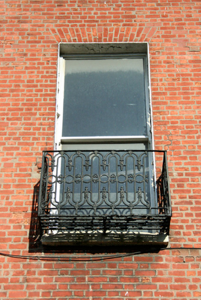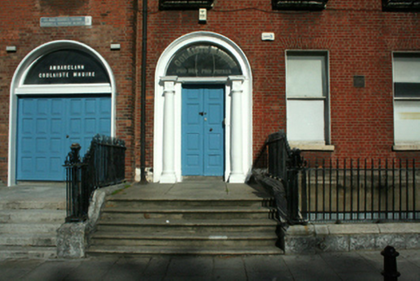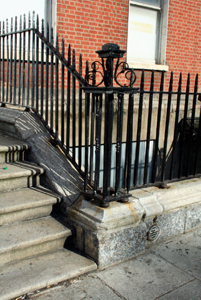Survey Data
Reg No
50010919
Rating
Regional
Categories of Special Interest
Architectural, Artistic, Social
Previous Name
Coláiste Mhuire
Original Use
House
Historical Use
School
Date
1760 - 1765
Coordinates
315561, 235121
Date Recorded
27/09/2011
Date Updated
--/--/--
Description
Terraced three-bay four-storey house over exposed basement, built 1763-4, as part of terrace to west of Charlemont House, formerly school. Vacant at time of survey. No. 26 stepped back from adjoining property No. 27 and aligned with adjoining property No. 25. Pitched roof with later glazed panels at apex and stepped yellow brick chimneystacks with moulded clay pots along length of party wall, shared with No. 25 and cast-iron rainwater goods breaking through rebuilt parapet wall with granite coping to west. Red brick walls laid in Flemish bond to granite block course over moulded granite plinth course, above rendered basement level. Gauged flat-arched window openings with painted patent reveals, painted granite sills and one-over-one pane timber sliding sash windows, with enlarged window opening with flush reveals to basement. Decorative cast-iron balconettes to first floor windows. Round-headed door opening with painted moulded reveals and painted stone doorcase. Painted replacement timber double-leaf door, flanked by engaged columns on plinth blocks, with squared capitals having paterae, supporting stepped lintel and replacement plain fanlight. Door opens onto granite platform bridging basement and four nosed grainte steps, flanked by moulded plinth walls with wrought-iron railings and matching square corner piers, returning to east to enclose basement area. Matching gate to basement area, linked by arched opening to No. 25. Round-headed door opening to basement below entrance platform, now blocked up.
Appraisal
No. 26 forms part of the west terrace of Palace Row, an impressive mid-eighteenth-century streetscape of imposing houses centred on Charlemont House, designed by William Chambers in 1763. The entire terrace was formerly Coláiste Mhuire school, and underwent extensive alteration. This building is enhanced by the simple classical-style doorcase, by the retention of timber sash windows which also contribute to its architectural character, and by the ornate balconettes. The retention also of the moulded steps and the platform to the entrance, and the plinth and railings to the basement area, provides an appropriate and intact meeting of house and street edge. all of this ensures that this house makes a fine contribution to the architectural and streetscape character of theis side of Parnell Square. Interest is added by the subtle advancement and recession of the façades along the terrace. The terrace was fully replete by the 1870s as shown by contemporary maps. The equal-sized plots are thirty-three feet wide, some ten per cent bigger than the standard Dublin plot.

















